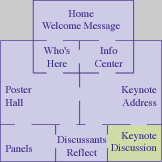Posted by:
Jeanne Century
Posted on: May 07, 2002 at 1:01 PM
Message:
We at the EDC Center for Science Education are completing a study of 9 school districts that have sustained hands-on elementary science programs from anywhere from 10-30 years. This long-term time horizon has helped us view the notion of "critical mass" differently than one might in a typical project time line of 5 years or so.Typically, educators consider "critical mass" as numbers - consistent with the view that a prerequisite for a sustained program is that a minimum number of teachers are teaching hands on science thus making it the practice, the standard for the district. This is difficult if not impossible when faced with high turnover. So, given the working definition of sustainability we have generated for this research project, (the ability of a program to withstand shocks over time while maintaining core beliefs and values and using them to guide its adaptations to change)we are thinking differently about critical mass. We have expanded the definition to say that critical mass is enough teachers teaching to create a culture of program self-generation. Furthermore, critical mass can encompass factors beyond a "magic number" of teachers teaching the program. For example, one of the factors influencing sustainability in our study was what we called "perception" - suggesting that the perceived number of teachers teaching a program may in fact be more important to influencing sustainability of that program than the actual number of teachers. We also have explored redefining critical mass to include the notion of critical mass of breadth (that's the numbers of teachers) as well as critical mass of depth (by that we mean the number of teachers understanding and commiting to the program). Critical mass of depth may in fact be more important for sustainability than critical mass of breadth. How does this help with the practical issue of turnover? I'm not sure - but wanted to offer different ways of viewing the issue outside of getting and maintaining numbers.
| 

